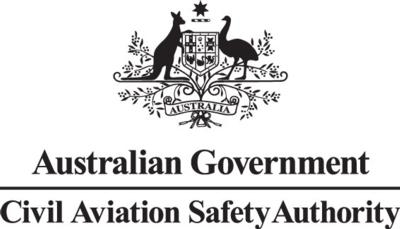Fri, Apr 04, 2014
New Rules Could Save $2 Million (AU) Across The Industry
New regulations covering a large number of flying training organizations in Australia are being simplified, according to that country's Civil Aviation Safety Authority (CASA). The agency says the move follows a review of its Part 141 of the Civil Aviation Safety Regulations.

The simplification of the rules and requirements will cut red tape and reduce costs for about 300 flying training schools across Australia. CASA estimates the changes will lower costs in the flying training industry by nearly $2 million (AU) a year. Optimal safety outcomes for flying training will be maintained by retaining the core elements of the new Part 141.
Part 141 covers flying training for recreational, private and commercial pilot licenses, ratings and endorsements for single pilot aircraft. It does not extend to intensive integrated training for private and commercial licenses, which is contained in Part 142 of the Civil Aviation Safety Regulations. The new licensing suite of regulations, which includes Part 141, will take effect from 1 September 2014. Simplification of the requirements will be made before the regulations come into effect.
Key changes to Part 141 are:
- The requirement for a safety management system will be removed. Recommending safety management systems are implemented for small, simple flying training organizations is more beneficial than mandating them.
- A quality assurance manager will no longer be required and the quality assurance system requirements will be simplified for operators who are limited to simulator training.
- There will no longer be a need to develop an exposition when transitioning to the new rules. An operations manual will achieve the same safety outcomes.
- To help reduce the administrative burden on flying schools, CASA will provide training course material and off-the-shelf operations manual material.
- A policy statement will be developed in relation to entry control processes to ensure they do not go beyond what is legislatively required.
CASA’s Director of Aviation Safety, John McCormick, said the review of flying training regulations was conducted in line with the Federal Government’s direction to look for opportunities to reduce the cost and burden of regulatory compliance on industry.
“I am very pleased the new regulations in Part 141 can be simplified and made less costly while at the same time maintaining high safety outcomes,” McCormick said. “Naturally, safety can never be jeopardized in the pursuit of simpler regulations but with hard work the two outcomes can be achieved. CASA has listened to the views of people in the flying training sector and responded to their concerns with positive action.”
More News
Aero Linx: Transport Canada We are a federal institution, leading the Transport Canada portfolio and working with our partners. Transport Canada is responsible for transportation p>[...]
Gross Navigation Error (GNE) A lateral deviation from a cleared track, normally in excess of 25 Nautical Miles (NM). More stringent standards (for example, 10NM in some parts of th>[...]
From AirVenture 2017 (YouTube Edition): Flight-Proven Booster On Display At AirVenture… EAA AirVenture Oshkosh is known primarily as a celebration of experimental and amateu>[...]
Aircraft Parachute System (CAPS) Was Deployed About 293 Ft Above Ground Level, Which Was Too Low To Allow For Full Deployment Of The Parachute System Analysis: The day before the a>[...]
Also: 48th Annual Air Race Classic, Hot Air Balloon Fire, FAA v Banning 100LL, Complete Remote Pilot The news Piper PA-18 Super Cub owners have been waiting for has finally arrived>[...]
 ANN's Daily Aero-Linx (06.29.25)
ANN's Daily Aero-Linx (06.29.25) ANN's Daily Aero-Term (06.29.25): Gross Navigation Error (GNE)
ANN's Daily Aero-Term (06.29.25): Gross Navigation Error (GNE) Classic Aero-TV: Anticipating Futurespace - Blue Origin Visits Airventure 2017
Classic Aero-TV: Anticipating Futurespace - Blue Origin Visits Airventure 2017 NTSB Final Report: Cirrus SR22
NTSB Final Report: Cirrus SR22 Airborne Affordable Flyers 06.26.25: PA18 Upgrades, Delta Force, Rhinebeck
Airborne Affordable Flyers 06.26.25: PA18 Upgrades, Delta Force, Rhinebeck



